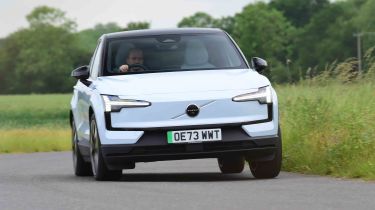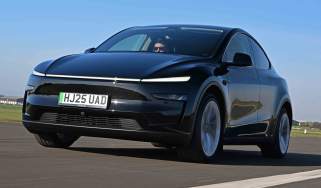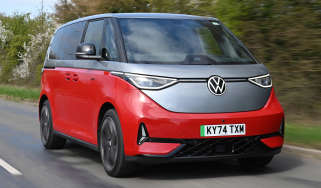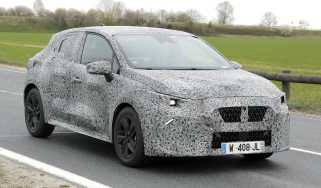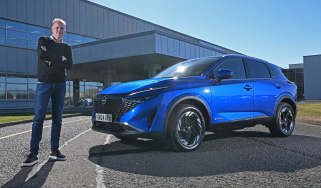Volvo EX30 - Range, charging & running costs
Range and charging speeds both compare well with similarly priced rivals but insurance is likely to be costly

The Volvo EX30 comes with two battery sizes. The largest battery size comes with a heat pump, and can be had in both rear-wheel drive, and four-wheel drive ‘Performance’ forms. The heat pump is a more efficient way of heating the interior in colder weather without using as much of the main battery’s charge and helps to maintain driving range. The four-wheel drive cars sap a little range due to the weight penalty of having an additional electric motor up front, and because of the extra performance offered on these models impacting efficiency.
Kicking the range off is a 51kWh (49kWh useable) battery that provides up to 213.8 miles of range. For those wanting to go further on a charge, the Single Motor Extended Range model with a 69kWh (64kWh useable) battery gives a combined 295.8 miles of range. However, that still comes up short of our preferred Advance trim Kona Electric, which can travel up to 319 miles on a single charge.
The Twin Motor Performance version adds four-wheel drive and a healthy dollop of extra grunt, although this pegs the range back a little to 279.6 miles, although when we tested a Twin Motor Performance EX30 against a DS 3 E-Tense, the Volvo only managed efficiency of 3.5 mi/kWh or 224 miles total range using the useable battery size figure.
The smaller battery version has a maximum charging speed of 134kW, so if you plug it into a fast enough charger, you can get a 10-80 per cent top-up (going from roughly 20 miles of range up to 170 miles of remaining range) on a long journey in around half an hour. The larger battery model gets an increased 153kW peak charging speed to maintain a 10-80 per cent top-up (from roughly 30 miles of range up to 240 miles of remaining range) in under 30 minutes. This is where the EX30 has other rivals licked, because even our favourite Hyundai Kona Electric can’t be charged as quickly, taking over 40 minutes to be topped up between 10 and 80 per cent.
Most owners will probably use a 7.4kWh home wallbox charger to charge up their EX30, and utilise cheaper overnight electricity rates - if they have the right electricity tariff. This means refilling the 51kWh battery should take under 10 hours, while the 69kWh model will take under 12 hours.
The EX30 will be great for company car buyers looking to save some money on their Benefit-in-Kind (BiK) tax bill, because all versions sit in a lower band than a traditional petrol or diesel car, or a plug-in hybrid. It’s also exempt from road tax and the London congestion charge – at least until 2025.
According to our expert data, the EX30 is expected to retain between 47 to 52 per cent of its original value after three years or 36,000 miles. That’s a little ahead of the Smart #1 (47 to 50 per cent), Kia Niro EV (46-49 per cent), and Hyundai Kona Electric (46 per cent). The Single Motor Core is expected to retain the most value, while the Twin Motor Performance Ultra will lose the most.
Insurance is likely to cost more for the EX30 than its rivals. The single motor version starts in group 35, while the range-topping Performance model is in group 40. The #1 ranges from groups 30-38, while the Niro EV is lower still in groups 28-29. None match the Renault Megane E-Tech, which starts in group 25.
| Model | Battery size (useable) | Range | Insurance group |
| EX30 Single Motor | 49kWh | 213.8 miles | 35E |
| EX30 Single Motor Extended Range | 64kWh | 295.8 miles | 37E |
| EX30 Twin Motor Performance | 64kWh | 279.6 miles | 40E |
